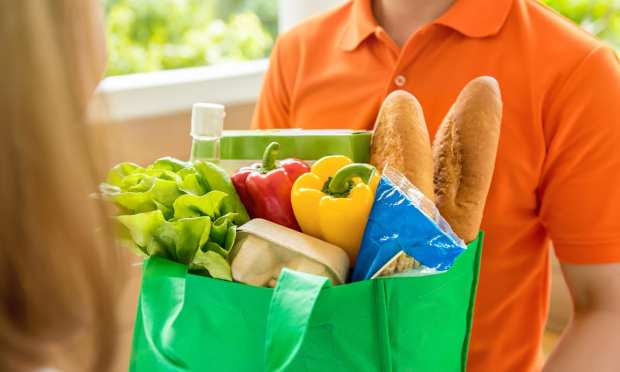Amid Top Line Growth, Boxed SPAC Deal Hints At Online Grocers’ Profit Challenge

For eCommerce firms focusing on groceries: The online sales are there, to be sure, but it’s the logistics and fulfillment that stand as pain points on the way to positive operating metrics.
To that end, in one of the latest headlines in the special purpose acquisition company (SPAC) space, online grocer Boxed announced this week that it is going public in a merger with Seven Oaks Acquisition Corp., a blank check company.
Drilling down into the investor presentation and projections, we see there are margin pressures that are common for quickly growing companies. The question becomes when (perhaps even if) the projections of positive results on the EBITDA line (a rough measure of cash flow) meet reality in a hyper competitive space.
SPAC Vs. Traditional IPO
As to the why-a-SPAC question: In an interview with CNN, Boxed CEO and Co-Founder Chieh Huang said the firm chose to go the SPAC route as it will garner a “quantum of capital” more than would have been seen with a traditional listing.
The company said in its presentation that grocery eCommerce is growing by a 19 percent compound annual growth rate, and will be worth as much as $248 billion in 2025. Per the release and the financials, Boxed sees itself as growing its top line at about twice that rate, at about 40 percent annually.
Within that market and as tailwind to those growth rates, Boxed operates as an eCommerce platform that has two segments, B2C and B2B. The B2C segment, according to the presentation, has more than 450,000 active customers, as measured in 2020, with $158 million GMV during that period, and an average order value of $96. Projections see this growing at 36 percent CAGR through 2026.
The B2B segment has about 24,000 active customers, with $35 million in GMV, with an average order value of $198.
Boxed notes in the documentation that its average order value (on the B2C side) of nearly $100 compares favorably to average order values of $85 on bulk wholesale, $60 pure-play online firms and $45 for traditional groceries.
In details tied to its financial model (Boxed also is licensing its technology in a white label, omnichannel offering), the company notes that net revenues will accelerate from mid-teens percentage point growth this year, before accelerating to more than 40 percent and tapering off to the low 30 percentage point level. In the meantime, cash operating costs — specifically, fulfillment, staff and overhead — will also grow by double-digit rates, which translates into adjusted EBITDA that won’t be positive until FY 2025, at an estimated $3 million, which in turn ramps to $63 million the subsequent year. Boxed states that 90 percent of delivery is available with a two-day (or less) window.
The online space is a crowded one, of course, in vying for consumers’ (and businesses’) online dollars for ordering groceries and staples and getting them delivered (with speed). Amazon bought Whole Foods, Target bought Shipt.
Infrastructure, of course, is part of the secret sauce that makes or breaks eCommerce, and especially, delivery firms (just ask Webvan). We contend that the ever-shortening delivery windows and pressures on the fulfillment components of operations may remain hallmarks of the space.
SPAC deals are famous for optimistic projections — and it remains to be seen where Boxed’s own models lie on the path between spreadsheet and reality.
